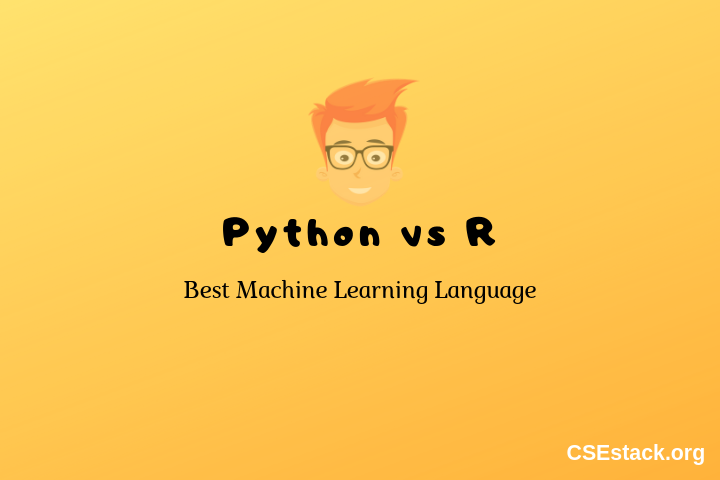

Machine learning is one of the hottest skills in the upcoming years. We have advanced it very rapidly in the strong age of AI.
A major number of developers are looking towards acquiring machine learning and deep learning skills. And if you are one of these people then you might get confused when it comes to choosing the right programming language for machine learning.
Coding languages are becoming more versatile and each one is unique by presenting specific features that you will not find anywhere else.
You only need to find the information, analyze it, and then sample anyone or another language to decide which is the best one or which one fulfills your needs?
In this article, we will be looking at the simple comparison between the two best programming languages that is Python and R which will guide you through your data science journey. Let’s see R vs Python for machine learning.
Table of Contents
It is an open-source, free, and powerful coding tool with high extensible features. The language was first initiated for the scientific data in the ’90s. R owns all the inclusive catalog of statistical and graphical methods.
Many well-known corporations like Facebook, Airbnb, and Uber are employing it. It is trustworthy for extensive research scientific data and broadly appropriate for any preferred option.
On top of that, it is having myriads of standard packages and ready-made solutions for better performance.
Before installing the IDE RStudio, it is recommended to use packages like dplyr, data.table, and plyr to simplify package manipulations.
The language was developed in the ’90s by Guido Van Rossum which is now deployed by huge organizations like YouTube, Google, NASA and much more.
In technical terms, it is an object-oriented and high-level tool which is integrated with the dynamic linguistics.
The language is made publicly usable by answering all the troubles with scientific data that are as simple as writing out your considerations about the solution.
There are plenty of powerful Python libraries available.
Python can quickly plunge into data science. For the coders and the beginners, the simple syntax makes it easy to write and debug the code rapidly.
Python comes in handy when you want to add the tasks of the data analysis to the work of web applications.
Before starting off with the Python, make sure to set up SciPy/NumPy for scientific procedures and pandas for the data manipulation.
Also, look at the matplotlib library for making the graphics by including the scikit-learn for machine learning.
What are the Other Factors to be considered while choosing R vs Python for ML?
R is popular for data analytics whereas Python is designed as a general purpose language.
The former is preferred for ad-hoc analysis and exploring datasets while the latter is suitable for data manipulation and repeated tasks.
R is a low-level programming language that requires a longer code for simple procedures. This is the reason behind the low speed.
While Python is a high-level language that has become the choice for all in building critical yet faster applications.
R comes with a steep learning curve. People with less to no experience find difficulty in the beginning.
Once you are good with the language, it becomes easy to understand.
On the other hand, Python is more emphasized on code readability and productivity by making it one of the simplest languages.
R comprises of easy to use complex formulas for carrying out the statistical tests and also contains readily available models for the same.
Python is more flexible when it comes to developing something from scratch and hence it is also used in mobile app development or websites.
R is more efficient for the analysis due to a large number of packages along with the readily usable tests and advantage of using the formulas. The language can also be used for basic data analysis without installing any package.
To this, the Python packages for data analysis was an issue but it has improved with the recent versions. There are many Python libraries available for Data Science. Now, Pandas and Numpy are used in Python for data analysis which is also suitable for parallel computation.
It is understandable that the visualized data gets understood efficiently and more effectively than raw values.
R contains numerous packages that provide advanced graphical capabilities while the visualizations are crucial when it comes to choosing the data analysis software contained in Python.
It comes up with more number of libraries but they are complex and lay out a tidy output.
If you want to be a data scientist, you need special skills.
Before coming to any conclusion, it is mandatory to understand that a language is just a tool for the developers. It is substantial to manipulate it for generating a superior solution.
If you are a newbie then we recommend opting for Python. It is automatically accustomed to some structure and style of code design. Start learning Python.
But if you have a little technical knowledge then you can try your hands on R.
This is all about- R vs Python for machine learning. What’s your thought?
Keep Learning!
Very interesting analysis. Thanks for sharing, and I decided to start with R.